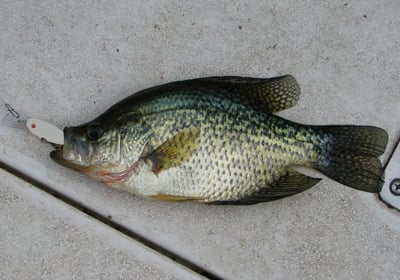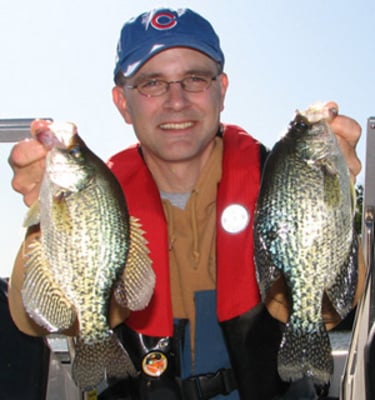I’ve touched on this topic before, but it’s worth revisiting now that fall is approaching and crappies are balling up in larger and larger groups.
While pre-fishing for the FLW walleye league finals, I’ve been encountering a growing number of schools of crappies. What makes these schools so much fun is that they are very easy to find using my Humminbird 1197…and once they’ve been found, they’re even easier to catch.
Here’s a look at what a school of “open water” crappies looks like, marked with the red arrow. Using traditional 2D sonar, you would need to drive right over the school to find it. However, with Humminbird’s industry-leading Side Imaging technology on board, I can keep my boat far away from the school (to avoid spooking the fish), yet still be able to find it and pin down its location. This particular school was found over a rocky bottom; you can see the rocks and their shadows on the left side of the image. This is one of many schools I have imaged in the past couple of weeks.



